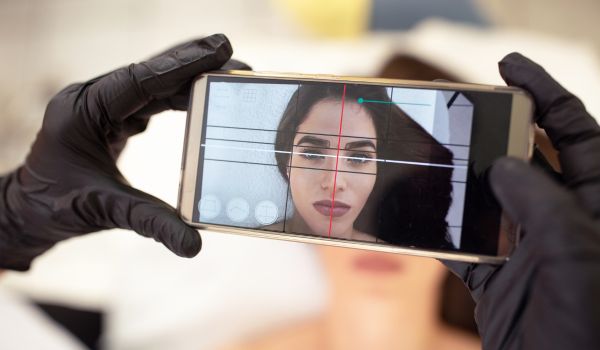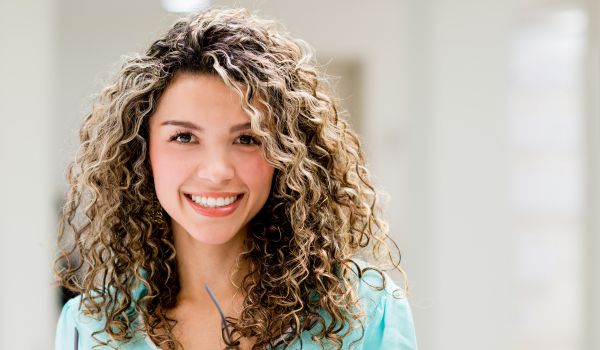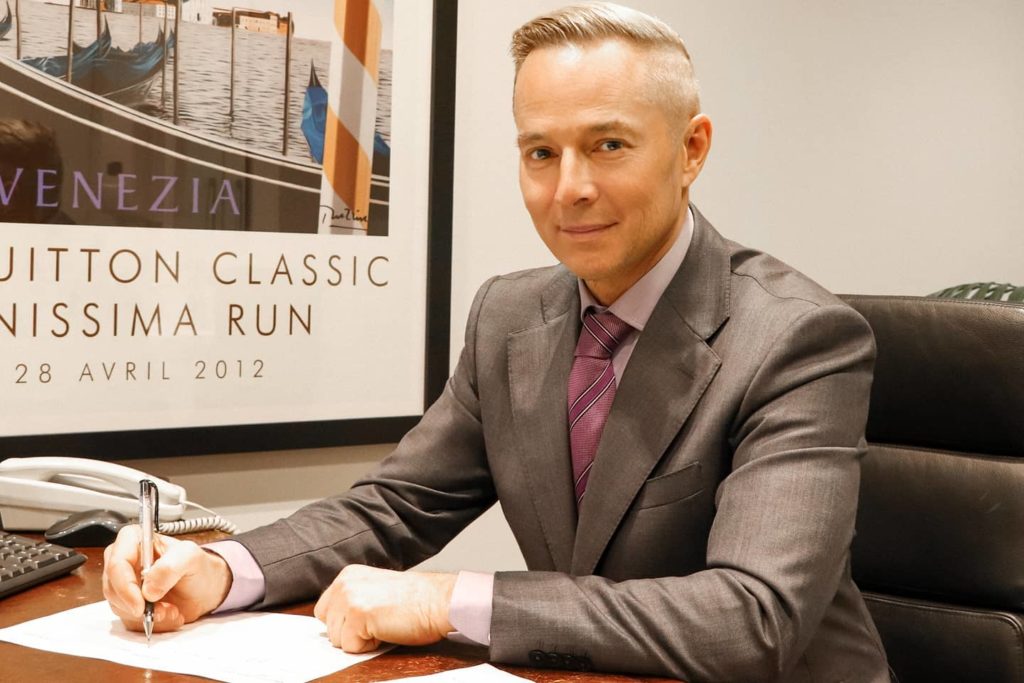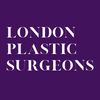Features That Make a Face Beautiful
Beauty is often said to be in the eye of the beholder, but there are certain elements that tend to captivate us all. A beautiful face often has a combination of features that create a harmonious balance, making the person appear attractive and engaging. This balance can include the proportion and positioning of facial features, the clarity and texture of the skin, and even the way a person expresses themselves through their eyes and smile.
If you are looking for solutions to enhance your facial beauty, Mr Mark Gittos is a leading Plastic Surgeon in United Kingdom and New Zealand and can help you recommend the most appropriate treatment plan tailored to your specific needs and preferences.
Download Mr Mark Gittos’ Guide to Facial Rejuvenation Surgery – Surgical and Non Surgical Anti-Ageing

Why Is a Face Beautiful?
The beauty of a face does not lie in just one element, but in the connections and relationships between the different parts of the face. The harmony between the eyes, nose, mouth, and facial contour creates a balance that defines beauty. This balance can be influenced by proportions, symmetry, and facial expressions, as well as how light and shadow play on the facial features. Ultimately, the beauty of a face is the result of a complex and dynamic combination of all these elements, providing an attractive and pleasing appearance to the eye.
What Science Has to Say about the Beauty of the Face
Scientists have long been intrigued by the concept of beauty and have conducted numerous studies to understand its underlying principles. Research has shown that certain facial characteristics, such as symmetry, proportionality, and averageness, play a significant role in our perception of attractiveness. Symmetry, for example, is believed to be a sign of good health and genetic fitness, making it a desirable trait.
In terms of proportions, the golden ratio—a mathematical concept found throughout nature—has been observed to influence our perception of beauty, as faces adhering to this ratio tend to be more appealing. Additionally, studies suggest that faces with features closer to the population average are often perceived as more attractive, as they may represent a genetic familiarity and diversity. While these scientific findings do shed light on some aspects of beauty, it is essential to remember that personal preferences and cultural factors also play a significant role in determining what we perceive as beautiful.
Features That Contribute to Facial Beauty

Several elements of the face contribute to the perception of beauty when combined. Some of these elements include:
- Symmetry: A symmetrical face, where the left and right sides mirror each other, is generally perceived as more attractive. This is because symmetry is often associated with good health and genetic fitness
- Proportions: Proportionate facial features, such as the distance between the eyes, the size of the nose relative to the mouth, and the positioning of the cheekbones, can create a harmonious and balanced appearance
- The Golden Ratio: When facial features follow the golden ratio (approximately 1.618), they tend to be perceived as more attractive. This mathematical concept is found throughout nature and is believed to be aesthetically pleasing
- Averageness: Faces with features that are closer to the average of the population are often seen as more attractive, as they may represent genetic familiarity and diversity.
- Skin clarity and texture: Clear, healthy, and glowing skin can enhance a person’s overall attractiveness, making their face more visually appealing
- Facial expressions: Genuine smiles, warm eye contact, and positive expressions can make a face appear more beautiful by conveying friendliness and confidence
- Youthfulness: Features that suggest youth, such as smooth skin, full lips, and high cheekbones, are often considered attractive because they signal good health and fertility
A Closer Look to Find Beauty
In the pursuit of beauty, certain features such as a wrinkle-free forehead, voluptuous lips, a symmetric nose, a firm neckline, and a well-defined jawline all play a crucial role in creating an almost perfect image, captivating our attention and leaving a lasting impression.
- Wrinkle-Free Forehead: A smooth, wrinkle-free forehead gives off an impression of youthfulness and vitality. The absence of fine lines and wrinkles can make the face appear more refreshed and well-rested, contributing to the overall perception of beauty. In turn, a youthful and vibrant appearance is often associated with good health and wellbeing, drawing us closer to the ideal of beauty
- Voluptuous Lips: Full, voluptuous lips are considered a sign of attractiveness in many cultures. They often signify youth, health, and even sensuality. Plump lips can balance out the proportions of the face, drawing attention to the mouth and creating a more inviting, approachable appearance. When combined with other harmonious facial features, voluptuous lips can contribute to a near-perfect vision of beauty
- Symmetric Nose: A symmetric, well-proportioned nose can greatly enhance the overall attractiveness of the face. The nose serves as a focal point, connecting the eyes and mouth, and plays a significant role in the harmony of the facial features. A balanced, symmetrical nose can create an aesthetically pleasing appearance, bringing us closer to the ideal of facial beauty
- Firm Neckline: A firm, toned neckline is often associated with youth and vitality, which contributes to the perception of beauty. The neckline supports the face and serves as a visual foundation for the overall appearance. A strong, well-defined neckline can create a sense of balance and proportion, complementing the facial features and presenting a more polished, attractive image
- Well-Defined Jawline: A sharp, well-defined jawline is considered an attractive feature as it creates a sense of structure and balance in the face. The jawline frames the lower part of the face, and when it is prominent and well-contoured, it can give the face a more chiselled, youthful appearance. In addition, a strong jawline can project confidence and assertiveness, qualities that are often perceived as attractive and contribute to the overall impression of beauty
The Beauty in Little Things

Natural beauty is all around us in our daily lives, and embracing it can lead to a more authentic and fulfilling experience. A smiley face is a genuine expression of happiness that radiates warmth and positivity, making others feel at ease and drawn to the person.
Healthy skin, nurtured through proper care and a balanced lifestyle, showcases a natural glow that signifies vitality and wellness. Scars, often seen as imperfections, can actually tell unique stories of personal resilience and growth, adding character and depth to one’s appearance.
Facial hair, when well-groomed, can accentuate a person’s features and create a distinctive look that celebrates individuality.
Finally, the graceful presence of grey hair signifies the wisdom and experience that comes with ageing, embracing the natural progression of life with elegance and poise. All of these elements contribute to the inherent beauty that exists within each of us.
Plastic Surgery Procedures to Make a Face Look Beautiful
There are different surgical and non-surgical procedures that can help you refine features of the face, achieve symmetry or an overall more attractive facial profile. Here are some of them:
Non-Surgical Procedures
Non-surgical procedures are becoming increasingly popular for those seeking to enhance their facial profiles without undergoing invasive surgery. These treatments offer a variety of benefits, including minimal downtime, lower risk, and more natural-looking results.
- Dermal Fillers: These injectable substances restore volume, smooth wrinkles, and enhance facial contours. Common fillers include hyaluronic acid, calcium hydroxylapatite, and poly-L-lactic acid. Fillers can be used on various areas, including cheeks, nasolabial folds, and even the nose or chin
- Anti-Wrinkle Injections: Treatments such as Botox, Dysport, or Xeomin relax specific facial muscles, reducing the appearance of fine lines and wrinkles. These injections work by blocking nerve signals that cause muscle contractions, allowing the skin to smooth out
- Lip Injections: Also known as lip augmentation or lip fillers, these injectable substances enhance the fullness and shape of the lips. Hyaluronic acid fillers, such as Juvederm or Restylane, are popular choices for this procedure, providing a natural and plump appearance
Surgical Procedures to Enhance Features of the Face
Surgical procedures offer more permanent and visible results compared to non-surgical treatments. Some popular surgical options include:
- Rhinoplasty: Also known as a nose job, this surgery reshapes the nose to improve its appearance and, in some cases, its function. Rhinoplasty can address issues like size, shape, and symmetry
- Facelift: A facelift, or rhytidectomy, is a surgical procedure that tightens and lifts the skin and underlying tissues of the face to create a more youthful appearance. This surgery can reduce sagging skin, deep wrinkles, and jowls
- Blepharoplasty: Also known as eyelid surgery, this procedure corrects sagging, puffiness, or drooping of the upper and lower eyelids, giving a more refreshed and youthful appearance
- Brow Lift: This surgery raises the eyebrows and smooths forehead wrinkles, creating a more alert and youthful look. A brow lift can be performed using different techniques, such as an endoscopic or open approach
- Neck Lift: Also known as platysmaplasty, a neck lift tightens the skin and muscles of the neck, reducing sagging and creating a more defined neckline and jawline
- Otoplasty: Ear surgery corrects the size, shape, or position of the ears, bringing them into better proportion with the face. This procedure is often performed on individuals with protruding or overly large ears
- Liposuction: Facial liposuction removes excess fat from targeted areas of the face, such as the jowls, chin, and neck, creating a more sculpted and youthful appearance
FAQs about Procedures to Enhance Facial Beauty

Are facial procedures suitable for everyone?
- While facial procedures can enhance the beauty of the face for many people, not everyone is an ideal candidate for all treatments. Factors such as age, skin type, medical history, and personal expectations can affect the suitability of a procedure.
What is the recovery time for surgical facial procedures?
- Recovery times for surgical facial procedures vary depending on the specific surgery and the individual patient. Generally, you can expect some swelling, bruising, and discomfort in the days following surgery. Recovery time may range from a few days for less invasive procedures to several weeks for more extensive surgeries. Your surgeon will provide detailed post-operative instructions and guidance on what to expect during the recovery process.
How long do the results of non-surgical facial procedures last?
- The longevity of non-surgical facial procedure results depends on the specific treatment and the individual patient. For example, dermal fillers can last anywhere from a few months to a couple of years, while anti-wrinkle injections last for about 3 to 6 months. It is important to note that non-surgical treatments often require ongoing maintenance to maintain the desired results.
What are the potential risks and complications of facial procedures?
- Both surgical and non-surgical facial procedures come with potential risks and complications, such as infection, scarring, bruising, swelling, and adverse reactions to anaesthesia or injectable substances. While these risks are generally low, it is crucial to discuss them with your medical professional before undergoing any treatment.
How can I determine which facial procedure is the best option for me?
- To determine the most suitable facial procedure for your individual needs and desired results, it is important to consult with your plastic surgeon. During your consultation, they will assess your facial features, skin condition, and medical history, as well as discuss your aesthetic goals and expectations. Based on this information, they can recommend the most appropriate treatment plan tailored to your specific needs and preferences. It is also a good idea to research various procedures, view before-and-after photos, and read patient reviews to gain a better understanding of the potential results and the surgeon’s expertise.
Further Reading about Face Procedures with Mr Mark Gittos
- Read Mr Mark Gittos’ Eyelid Surgery – Blepharoplasty
- Read Mr Mark Gittos’ Facial Implants & Chin Implant Surgery
- Read Mr Mark Gittos’ Mini Facelift Surgery
- Read Mr Mark Gittos’ Upper Lip Lift Surgery
- Read Mr Mark Gittos’ Blog about Solutions for the Ageing Face
Medical References about Face Surgery
- Total Facelift: Forehead Lift, Midface Lift, and Neck Lift – PMC
- Blepharoplasty: An Overview – PMC
- Cosmetic surgery – Mayo Clinic
- Otoplasty – NCBI
- Current concepts in lip augmentation – NCBI
About Mr Mark Gittos FRACS (Plast) – London Plastic Surgeons
Practice locations in London & Essex, UK and Auckland, New Zealand.
Mr Mark Gittos offers high quality, natural-looking cosmetic surgery results and is highly experienced in Breast, Body and Face Surgery having performed over 4000 Surgeries in the last 26 years.
With world-wide expertise Mr Gittos is an expert in breast, face and body surgery for men & women.
Mr Mark Gittos is a leading Specialist Plastic Surgeon and operates a practice in London UK and Auckland New Zealand. His practice focuses on both surgical and non-surgical procedures, each designed to help restore, improve or change a physical characteristic or problem. The first step in every case is to talk through your personal requirements and explore all the options, before deciding on the most effective solution.
Naturally, before any treatment is begun, we will explain clearly the advantages and risk factors; so that you have the information you need to make an informed decision that is best for you. Visit the practice to find out more.

NEXT STEPS
Do your Research
- Read the Website and Blogs relevant to your procedure
- Browse our Frequently Asked Questions including how to choose a Surgeon for your procedure
- Download the Guides to Surgery
What to Bring to your Plastic Surgeon Consultation
- Bring a friend or relative to help discuss the information and your choices
- Take lots of notes and read the documents provided thoroughly
- Want more information before scheduling your consultation?
Book your Initial Surgery Consultation
- A Referral from your GP or specialist is helpful but NOT essential – you can have a consultation without a GP Referral
- Email us or Call in London on 07557 858156 to arrange your surgeon consultation appointment.
- Book a consultation with Mr Gittos by paying the Consultation Fee
Please contact us to arrange to book a consultation with our Specialist Plastic Surgeon or to speak with our Patient Care Advisor.
Send an enquiry form today or UK phone 07557 858156 during Clinic Hours
